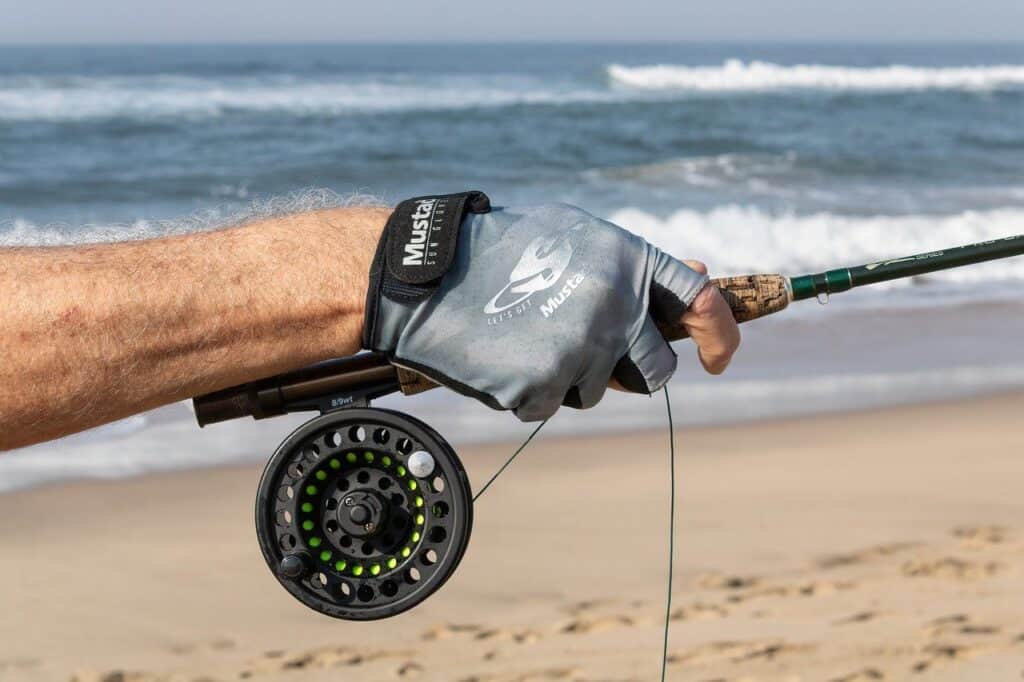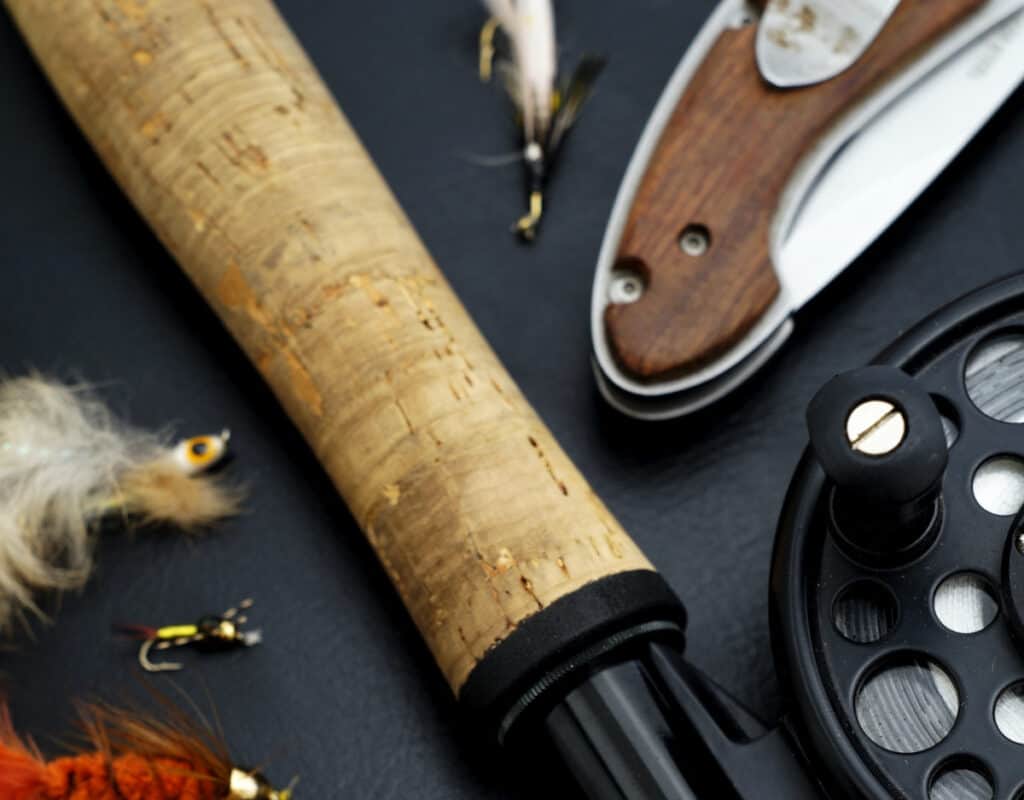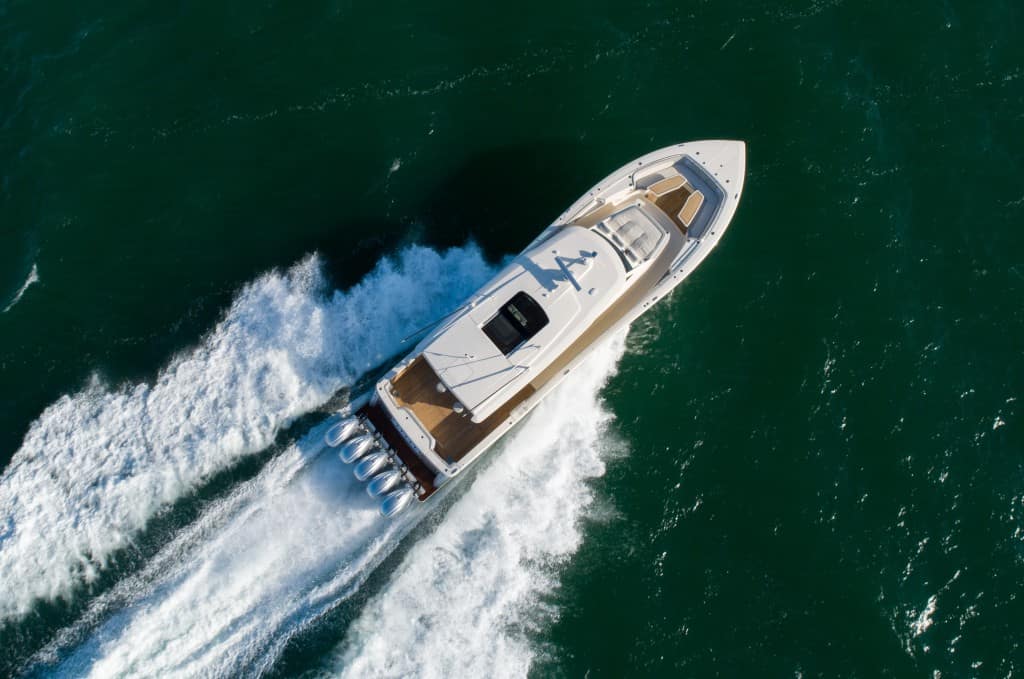
You hand over your tackle bag. It has a few less flies in it than when you started the day.
Your buddy, already on the dock, dumps your bag next to his in the lopsided dock cart. And you glance around the boat again. What did you miss? Ah, your hat. It’s been a good day–you each hooked two bonefish.
But you both know what you really wanted was to finally add an Indo-Pacific permit on a fly to your list of accomplishments. It’s alright, you caught sight of a few today. They weren’t interested in what you presented, but tomorrow they could be in a whole different frame of mind.
That’s how those persnickety permits work.
Besides, you’re here for a few days. The forecast is good. Tonight you’ll dine. Tomorrow you’ll try again.
All About the Indo-Pacific Permit
Let’s take a closer look at this sought-after Indo-Pacific permit (sometimes called Silver Pompano, Snub Nose Pompano, or simply Pompano). They are a member of the Carangidae family.
First, when you think of a permit, you have to wonder which one. There’s the Indo-Pacific permit and the Atlantic permit. Both are considered dream-makers (or troublemakers) by saltwater fly anglers.
The Indo-Pacific Permit are smaller than the related Atlantic permit. Of the Indo-Pacific variety, there are three species, the Blochii, Africanus, and Anak, that are sought out by fly fishing anglers. The average size of an Indo-Pacific permit is usually between 6-15 pounds (although ones twice that size have been caught). The Atlantic permit, on the other hand, averages 20-30 pounds and can grow even bigger.
Which is harder to catch? Oh, well, THAT will cause a debate for sure. And…is probably a topic beyond this post. Let’s stick with the acknowledgment that they are both tantalizingly tricky.
Their large, flat silver sides work like a mirror, reflecting the water, grass, fans, and coral that they swim through–making them spectacularly camouflaged.
In addition, they are challenging because they are skeptical of any unnatural food and spook easily. Some say they are the most skittish of prize flyfishing catches.
They, in general, are finicky and sometimes downright frustrating in their unpredictable patterns. But the allure remains because they are fast, powerful, and an absolute thrill to get on the line.
Where to Find Indo-Pacific Permit
The Indo-Pacific permit can be found throughout the Indian and Pacific Oceans. Popular angler destinations include Seychelles, Oman, St Brandon’s, Dubai, Mexico, and Australia.
However, if you are looking to find one of these holy-grail fish closer to home—perhaps wanting to do fishing from the deck of your own Scout boat—consider seeking out the Atlantic permit instead. These larger cousins range from North Carolina, down the East coast, Bahamas, Cuba, and through the Caribbean to Venezuela.
Catching either fish (Indo-Pacific or Atlantic permit) on a fly, be it for the first time or the fiftieth, is an accomplishment. They may live halfway around the world from each other, but they are neck-and-neck in their lack of loyalty to committing to eating even the most well-presented fly.
—Yellow Dog Flyfishing Adventures
Picking the Right Water
Adult Indo-Pacific permits prefer clear water and are usually found hanging about reefs either alone or with one or two other fish. Not always where you’re wading. But juvenile fish tend to hang about in schools closer to shore in bays or river mouths.
One advantage in seeking out permits is that they tend to have small territories. Meaning that once you find where they like to hang out, you’re likely to continue to find them there.
But with crustaceans being an irresistible draw, even large permit will leave their deeper water dwellings and come into shallow flats looking to snag a delectable bite–rewarding wading fly fishing anglers with a prime opportunity to hook a big one.
When seeking permits out, look for habitats supporting rich marine life, such as grassy bottoms. The slower-moving waters around slack or a Neap tide cycle produce more idyllic conditions as the fish are more relaxed and not as distracted or worked up over the fast currents as the feed.
Because these shallow feeding grounds are not their natural home, these already skittish permits will be on high alert. They will be sensitive to anything unusual. Like you. Or that fly that landed a bit too close to its tail.
On top of that, they have large, smartly placed eyes that don’t miss much of anything. For these reasons, if you are looking to catch a large permit, the deeper water will yield more desirable opportunities.
Packing the Tacklebox
Indo-Pacific permit are finicky carnivores.
So this is the time to be selective and pull out your best fly. A crab, to be specific–but it will also need to resemble (very closely) a local variety of crab. This is where a knowledgeable local guide can make all the difference in your success.
An Alphlexo Crab is thought to be the must-have in the tackle box when on the search for permit. This sinking crab with flexy legs is known for their realistic characteristics, it can fool even the most skeptical and uncooperative targets.
For a rod, you’ll want to grab your 9 foot—of a 9 or 10 weight. Match it with a quality saltwater reel and a floating tropical line.
There isn’t one full-proof way to catch a permit. (Guess that’s why they are the pinnacle of flyfishing accomplishment.) Some guides rely on short-twitchy retrieves. Or, other flyfishers find success by letting the fly sink all the way to the bottom and keeping tension on it. If you are on a skiff and have the luxury of sight with you, you can gauge your action to better catch their attention.
The fickle nature of how Indo-pacific permit respond to being presented with a fly is legendary. It has to be presented just right–not too close, not too far. Sometimes it takes a few casts, sometimes, you only get one chance. Strike the surface, or let your fly sink–it depends on the day. Yet, on rare days they will aggressively attack your fly with no hesitation. It’s all that makes them challenging and a hard-won reward to catch.
Tips for Catching Indo-Pacific Permit on a Fly

Patience and persistence.
Honestly, there’s little more to say.
Talk about the Indo-Pacific permit to a group of experienced saltwater fly anglers and you will hear the phrase “the fish of a thousand casts.”
They take dedication that is measured not in hours or days but, more often, in weeks and months.
Permits are most successfully caught from a skiff as opposed to wading in the flats as there is some advantage in not disturbing them with slogging through the muddy grass flats they love.
With either approach, you’ll be looking intently for a flash of silver or gold and a subtle disruption in the water. Unlike, say, the Yellowmargin Triggerfish, who will be more flamboyant about their location by flopping their tail above the surface, permits are harder to spot. Though eventually, you’ll catch a glimpse of their sharp, gold, pointy fins breaking the surface when in the shallows.
Once spotted, you’ll need to determine which direction they are going. Casting your fly behind them will spook them—and they’ll be gone. Each cast counts as each one is an opportunity to scare off your target. You’ll want to present your fly very close to the fish. For permits, you won’t want to lead it by too much distance.
Because sighting where the permit is—and where they are going—is critical, it is important to have your gear at the ready. A brief distraction with a snarl, and you could lose sight of your fish.
Once you believe your fly has been taken, keep your rod tip down and firmly make a long strip until you feel tension.
Once set, be ready for a ride. These Indo-Pacific permit are fast and furious. They will likely want to head to deeper water and, on the way, may be trying to rub your fly off on the sea bottom. You’ll be challenged to but focus on maintaining tension.
One last tip that may improve your odds…they, like many other fish, are drawn toward the feeding scraps that rays and sharks provide. Knowing this can give you an advantage and can make finding them easier.
Newsworthy Notes About the Indo-Pacific Permit
These fish straddle the line between a saltwater fly angler’s dream and nightmare.
Here are a couple IGFA World Records for the Atlantic permit (just in case you think yours can beat it!)
Fishing with Scout Boats

While catching a flight halfway around the world might be required for a chance at snagging a Indo-Pacific permit, it’s likely your Scout boat can easily take you where you need to go to find its big (and just as feisty) brother, the Atlantic permit.
Whether enjoying the warm coastal flats along the Eastern seaboard or the permit playground of the Florida Keys and the Bahamas, Scout has the luxury boats and tenders to satisfy every angler’s wants. Virtually build your Scout today.

